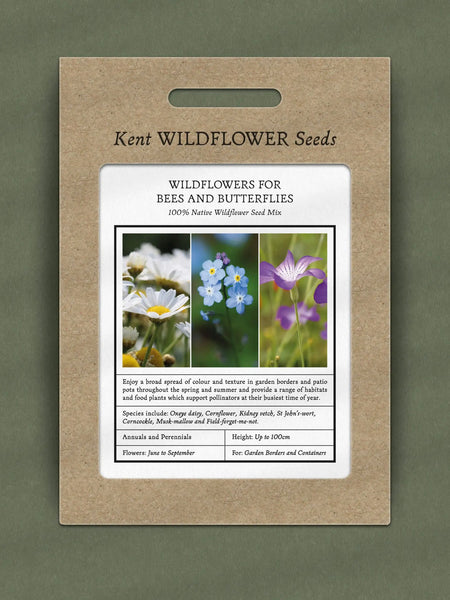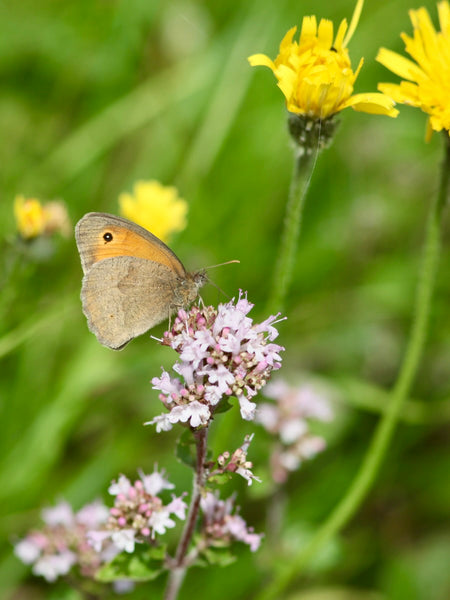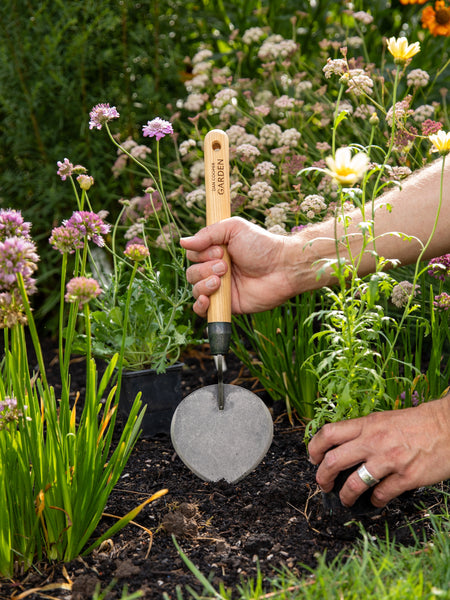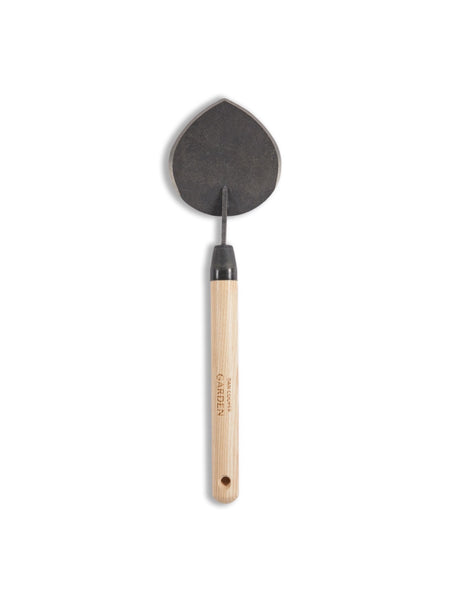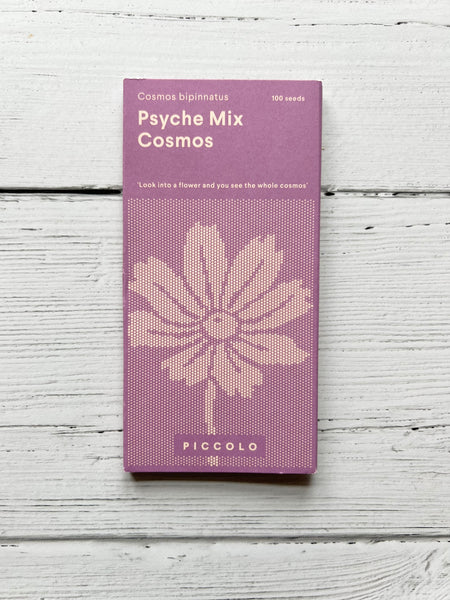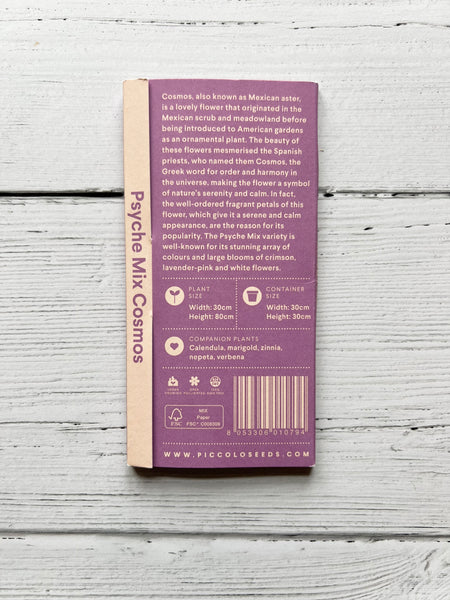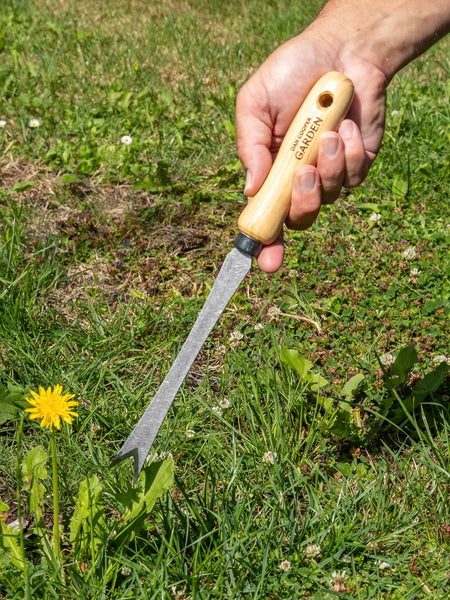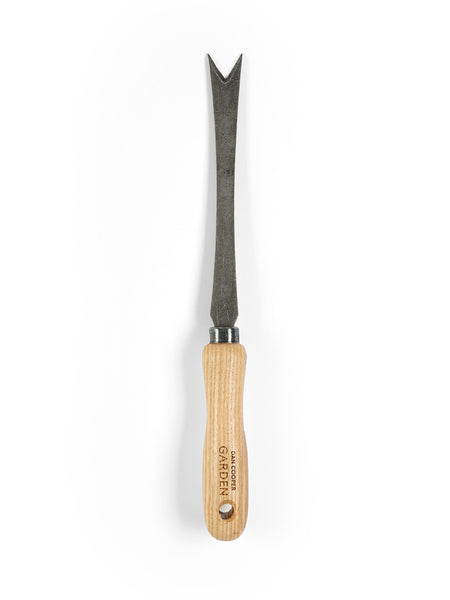May, Oh My! How rich and luxuriant you are. I want to bathe in your greenness, shower beneath your blossom and dream in your flowery meadows.
If you’ve not already caught on, May is my favourite month by far. The earth is almost vibrating with pent-up energy, and all around us, life feels new, vital and full of hope. May is the first month when we can comfortably spend whole days outside, either gardening, relaxing, walking in the countryside, or visiting open gardens. Extreme fluctuations in temperature are still to be expected - frosts are still possible, as are daytime temperatures above 20ºC - so patience is required lest tender plants be set back or killed outright by cold. This year, some gardeners have suffered losses due to the mild, wet winter and dry start to spring, but don't be in too much haste to fill gaps, as you'll be amazed how quickly they disappear as the month progresses - hopefully not beneath a carpet of weeds!
I always think that if a garden does not look lovely in May, then there’s a problem. Fresh, new growth, unsullied by drought, dust and pests, covers a multitude of sins. Of course, all is not lost if you can see room for improvement - May is a month rich with opportunity and possibility.

Although I love my garden in May, time spent in the countryside takes some beating. Hedgerows in the south are already quilted with May blossom (hawthorn - Crataegus monogyna) and frothing with cow parsley (Anthriscus sylvestris). If you want to grow something similar in your garden, there’s still time to sow bishop’s flower (Ammi majus) for late summer - leave the seed heads to encourage goldfinches into the garden over winter. Woods, generally ancient ones, will be awash with honey-scented bluebells (Hyacinthoides non-scripta) and wild garlic (Allium ursinum) until a spreading canopy of bright green gently puts them back to sleep again. Enjoy these precious moments as they’re over all too soon.
In our gardens, we can enjoy a host of blooms, starting with late tulips and crab apple blossom and ending with wisteria, irises, peonies, foxgloves, and roses. May is a month of transformation, the bridge between spring and summer, so why not get outside and immerse yourself in it?
May at a Glance
Plan - bulb displays for autumn planting, succession planting for late summer colour.
Sow - lavender, cosmos, bishop’s flower, annual meadow mixtures, squashes, sweetcorn, radishes; all the autumn and winter-picking brassicas; French, runner and broad beans, lettuce, parsley, Florence fennel - almost anything in fact!
Plant - container-grown shrubs, roses, perennials and climbers. Hardened-off sweet peas and other hardy annuals. Summer bedding and dahlias (late in the month).
Prune - forsythia, flowering currant and Japanese quince. Evergreen shrubs such as bay, camellia, holly, laurel, photinia, pittosporum and mahonia can take light pruning and removal of any old stems and branches.
Harvest - asparagus, broad beans, carrots, cauliflower, kale, lettuce, mint, parsley, radish, rhubarb, spinach, spring cabbage, spring onion, purple sprouting, turnips, wild garlic.
Pick - polyanthus, alliums, tulips, bluebells (only from your own garden).
Buy - peat free compost for containers, terracotta pots, container-grown plants, bedding plants (late in the month), tomato and lawn food, liquid seaweed, weeding tools.
Enjoy - all the shades of green, fleeting blossom, fragrant bluebells, ebullient hawthorn, frothing cow parsley, spring weddings, BBC Chelsea Flower Show coverage.
Visit - RHS Malvern and RHS Chelsea shows, ancient woodlands awash with bluebells, gardens famed for their collections of rhododendrons and azaleas - Stourhead, Trellisick and Ramster are favourites of mine.

Indoors
Much of April’s advice still stands but there are a few additional tips to get the best from your houseplants in May:
- Brighter, lighter, longer days and warmer temperatures mean that established houseplants should be growing happily again now. As the strength of the sun increases, check plants positioned on bright, sunny windowsills to be sure that they are still happy there. Some foliage plants, especially those with dark green leaves, scorch very easily and prefer filtered or indirect sunlight. At the first sign of scorching - normally identified by crisp brown edges or blotches on the leaves - move plants back from the window a few centimetres. Many of my own houseplants have summer and winter quarters, particularly flowering kinds like streptocarpus that do well on a bright windowsill in the winter but prefer indirect sunlight during the summer. Trial and error will find you the best solution.
- I find that some houseplants start to outgrow their space in May and other can get a little straggly. Taking stem cuttings from tradescantias, coleus, plectranthus, impatiens and pothos is easy - cut stems cleanly just below a leaf node (where the leaf joins the stem) and pop them in a glass of water on a windowsill. You’ll see roots developing within 2-3 weeks and then they can be potted up in peat-free compost to grow on.
- Continue feeding and watering more regularly. Feed plants once a week with a good quality houseplant fertiliser and water them each time the surface of the compost feels dry to the touch. Even cacti and succulents enjoy a regular drink from now until autumn. Avoid plants standing in water for too long - pour away any excess that they’ve not soaked up after an hour or so.
- Tap water contains lime and all sorts of other chemicals that sensitive plants abhor. Collect rainwater, either in a water butt or by standing a washing-up bowl outside when it rains. Many plants, especially azaleas, orchids, air plants and carnivorous plants, require rainwater and will eventually perish if watered frequently from the tap.
- If any of your houseplants have become rootbound then now is the time to move them into a slightly larger pot or container. You can tell if a plant is rootbound by gently tapping the pot on a firm surface and lifting the plant out. If there are lots of roots visible on the outside surface of the rootball then you probably need to find a new pot that’s around 2cm bigger in diameter. Always use fresh, peat-free compost for repotting and take care not to disturb the roots too much. If the roots have started to spiral around the bottom of the pot, then it’s helpful to tease them apart gently so that they’re encouraged to grow into the new compost.
- If you’re at home during the day you’ll probably notice, as I do, that dust accumulates very quickly on the foliage of houseplants. Use a microfibre cloth or a special leaf cleaning brush to remove surface dust and follow with a leaf shine spray if you want to keep your plants looking pristine.

Potting Shed & Greenhouse
- Lavender is a short-lived subshrub that is best replaced every 3-5 years before it becomes woody and tired. If you need more than a handful of plants, it’s more economical to grow a new batch from seed. Sow them in a seed tray and cover them with a thin layer of compost. Pop the tray in a polythene bag and refrigerate for two weeks at about 4ºC - the main compartment of a fridge should be just right. Then bring the tray into a warm room or greenhouse where germination should occur within 2-3 weeks. By autumn or next spring, the lavender plants should be large enough to plant outside.
- Still in the herb garden, now’s the time to take cuttings of woody herbs such as hyssop, rosemary and thyme. Dibble them into pots of gritty compost and they will root within a few weeks. Parsley can be sown outdoors now that the weather is warmer and I like to sow some Greek basil indoors for planting out later - the flavour is superb and the small leaves are excellent scattered on a pizza. Greek basil is far easier to grow than the classic Genovese basil we buy in the supermarkets.
- If you are growing tomatoes, cucumbers or aubergines in a greenhouse, water regularly as the weather starts to warm up. Tie the stems securely to canes as they start to surge upwards.
- Big temperature fluctuations are a gardener’s enemy at this time of year. Be sure to open your greenhouse doors and windows on warm days otherwise the temperature inside can soar well above 30ºC. Don’t forget to close them up again in the evening. Put up shading to diffuse bright sunlight and guard against scorching.
- Pests can take control within days if left unchecked. Inspect plants regularly, concentrating on shoot tips and the underside of leaves. Because my greenhouse is small I tend to squish any pests that I find or I wipe them away with a cloth that has a little bit of washing-up liquid on it. If you’re serious about pest control, you can work with biological controls that have no adverse impact on our environment.
- Freesias seem to have fallen from grace lately, but I recently bought a bunch and it reminded me how gloriously fresh and potent their fragrance is. You can now plant heat-treated freesia corms in pots or prepared beds for fragrant flowers later this summer.
- Prick out seedlings as soon as they get their first true leaves to avoid overcrowding and weedy growth. This can be a time-consuming job in May so it’s best to keep on top of it by tackling a few trays or pots every day.
- Start to harden-off tender plants and summer bedding ready for planting outside. This is an important process as it helps to accustom plants not only to the temperature outside but also to wind and brighter light conditions. If you skip this stage your plants might stop in their tracks for a few weeks whilst they adapt to their new surroundings. Simply stand pots or trays outside during the day and bring them back inside overnight. Your plants will soon toughen up and be ready to fend for themselves.

Terrace & Balcony
- Unless you have somewhere to shelter them, or you live in a very mild area, early May is still a little early to plant up large pots, troughs and hanging baskets with summer bedding. By the end of the month, any risk of frost should have passed and you’ll be good to go. In the meantime, it’s fun to plant up a handful of smaller pots that can be moved inside again if the temperature drops. Arrange them on a garden table, window ledge or wall where you can admire them at close quarters.
- Make a decision about what to do with spring bulbs planted in pots. In my experience, tulips will not re-flower reliably in their second year, so my advice would be to plant them somewhere in the garden whilst still ‘in the green’ to free pots up for summer displays. If you don’t have the space, consign the plants to the compost heap and start again with new bulbs in the autumn. Daffodils are slightly more resilient provided you feed and water them until the foliage has died down. You can then lift and dry the bulbs for replanting in August or September. Hyacinths won’t re-flower quite as abundantly, but they’ll almost certainly bloom again if you can find a little corner for them to rejuvenate.
- Take this last opportunity to clean garden furniture, jet wash patios and scrub barbecues. There are some big celebratory weekends coming up through May and June and it’s good to be ready for visitors to descend at any moment.
- If your garden is on a roof or balcony, be mindful of how exposed these situations can be. Bright light can be a distinct advantage when growing many vegetables and summer annuals, but wind and high temperatures can cause potted plants to dehydrate very quickly. Water daily, or even twice daily, if required and replace leached nutrients by feeding regularly.
- Climbing plants such as wisteria, honeysuckle, passionflower and clematis growing on pergolas, pillars and arches should be tied in to keep them from wandering off in their own direction. Use a soft twine at regular intervals to keep them neat and secure. Fresh growth can easily be bruised or broken, so be as gentle as you can.

Flower Garden
May is a month of two distinct parts in both the flower garden and the kitchen garden. The all-important watershed moment is defined by when the risk of frost is finally past: that can only be determined by watching the weather forecast like a hawk, already a favourite British pastime! I’ve separated the month’s activities out into ‘Early May’, i.e. when there’s still a frost risk, and ‘Late May’ when all danger is over.
Early May
- Many annual flowers, hardy and half-hardy, can be sown outside now. Opium poppies (Papaver somniferum), cosmos, zinnias and taller cultivars of marigold such as T. patula 'Linnaeus Burning Embers' make great fillers in between perennials and grasses. For something a little different, try the marvel of Peru, Mirabilis jalapa, which is famed for opening its flowers after 4pm and filling the garden with a delicious perfume. Soak the seeds in lukewarm water overnight before sowing.
- Sow a flower meadow on any spare piece of ground, provided it’s been cleared of as many weeds as possible. By the end of June, you’ll be enjoying a carpet of colourful flowers.
- Continue deadheading daffodils and tulips so that all the plants’ energy is sent back down into the bulbs for next year. Apply a liquid feed to help plump up the bulbs - the bigger they get the better they will flower. Do not under any circumstances remove the foliage until it has turned yellow or brown and comes away without tugging. As ugly as they are, the leaves are needed to recharge the bulbs underground.
- Spring bedding plants such as wallflowers and forget-me-nots will run out of steam at some point this month. Pull them up and add them to the compost heap once they tire. Perennial wallflowers such as ‘Bowles Mauve’ and my favourite, ‘Red Jep’ should be deadheaded. They won’t live forever but you can take cuttings when they start to look dishevelled. Violas may have a second wind if you chop off the top two thirds and let them resprout from the base. If you’ve grown honesty (Lunaria annua), leave the plants alone to ensure you benefit from the translucent, papery seed pods later in the year.
- Check lilies and fritillaries daily for scarlet lily beetles and their horrible gunge-covered larvae. These irritating pests have one downfall - they are very easy to spot. However, they are also deeply destructive and can strip your lilies of foliage in days, leaving behind lumps of black frass (excrement - yuk!). If you’re inflicted, take heart as I have managed to completely eradicate them from my garden over a number of years. They could come back at any time but I’ll be ready and waiting for them.
- Protect sweetpeas from slug and snail damage and encourage them to grow up nets or canes by tying them in at 20cm intervals.
- Put supports in place for clumps of perennials that are prone to flopping over. Even if they look straight and perky now, once they reach their full height they will more vulnerable to wind damage.
- Reduce snail and slug populations by going on regular evening hunts, especially after rain. This is my life from April until October, sneaking around in the dark using my phone camera to pinpoint marauding molluscs. It’s not the most fun you can have after dark, but it has to be done.

Late May
- As soon as it’s safe to do so, begin planting out summer bedding and tender annuals. If a dry spell follows, continue watering until the plants are nicely settled. Pinch out the growing tips of cosmos, marigold and snapdragons (antirrhinums) to encourage bushier plants.
- Exotics such as castor oil plant (ricinus), abutilon, banana and canna can be moved outside now. If they’ve been in a shaded spot, accustom them to bright sunshine slowly otherwise their leaves may bleach and burn. By the end of the season, these fast-growing plants can quadruple in size so help them on their way with regular watering and feeding.
- Dahlias and chrysanthemums can also be planted out. Consider how you’ll support them as they grow, inserting canes or stakes that will be strong enough to take their full-grown, flowering weight. If you are growing them for cut flowers, consider how you’ll move between the plants to collect the best blooms before using nets or string.
- The ‘Chelsea Chop’ is a gardening ritual that even non-gardeners may have heard about. In truth, it’s a very basic operation designed to delay the flowering of perennial plants and thereby keep the garden looking colourful for longer. The Chelsea Chop also makes plants shorter and somewhat stronger. All that happens is that the top growth of certain perennials, including phlox, helenium, achillea and sedum, is reduced by 30-50%, either using a pair of shears or secateurs. Plants that have had the Chelsea Chop administered during the week of the famous flower show (generally the third week in May) will typically bloom four to six weeks later than those left to their own devices.

Trees, Shrubs & Lawns
- Prune spring-flowering shrubs such as forsythia, flowering currant (Ribes) and Japanese quince (Chaenomeles) soon after flowering to keep them compact and healthy. Use a sharp pair of secateurs, or choose loppers if you are tackling larger branches. If you don’t have time for pruning this month, you can leave it until June.
- Check shrubs and hedges carefully before you start working on them to avoid disturbing nesting birds.
- Trim topiary regularly to promote bushy growth and keep it looking neat. Young box plants can be cut back by up to one-third in May to encourage bushy growth. Mature box plants can be left and trimmed in August.
- Sow grass seed or lay new turf by the end of the month. Water regularly if the weather is dry.
- Apply a nitrogen-rich summer lawn feed to encourage strong growth and that shimmering emerald colour we all associate with English lawns. If you want perfection, you’ll need to weed out dandelions and daisies religiously. Most people now embrace these interlopers and appreciate their beauty. Accepting the presence of plants other than grass in a lawn certainly saves a lot of time and trouble, added to which the benefits for wildlife are significant. Dandelion flowers, for example, are great for bees and goldfinches will feed on the ‘clocks’ that follow.
- Do mow broad paths through large, informal grass areas so that you can walk in among the wildflowers like oxeye daisy (Leucanthemum vulgare) that will soon emerge. Take care not to remove the foliage of spring bulbs in the process.

Kitchen Garden & Allotment
- Sow salad crops in succession from now until late summer. Unless you have a lot of mouths to feed, a pinch of seed of each type every three to four weeks will be enough to keep you going. We are always planting too many lettuces at once and they run to seed before we can finish them. For best results use fresh seeds, keep the plants consistently moist and cool and thin them to the recommended spacing. Salad crops will generally tolerate a degree of shade. If salads are allowed to dry out or grow too close to one another they’ll quickly run to seed.
- If by any chance you have an empty bed, sow a green manure as a stop-gap to prevent weeds from getting the upper hand. When you are ready to plant, dig the green manure in so that it returns precious nutrients to the soil.
- Keep on top of weeds, hoeing or cultivating on a dry, sunny day so that displaced seedlings will shrivel up and die. Mulching with homemade compost, straw or mushroom compost will help to suppress weeds as well as conserving moisture and regulating the temperature of the soil.
- Earth-up potatoes, covering the shoots with soil as they appear. There are three reasons for doing this - first to protect the young shoots from frost, second to increase the length of the underground stem from which potatoes will develop and third to prevent any spuds that form close to the surface from developing a green, poisonous skin.
- There’s so much sowing that can be done this month. Sweetcorn can be started off in deep pots indoors so the young plants are ready to be transplanted in June. Sweetcorn seed germinates better when it’s fresh so avoid using old seed. French and runner beans can be sown directly outdoors in warm weather but I find it’s still better to sow them in old toilet roll tubes in the greenhouse until June.
- Start picking rhubarb in earnest now, choosing just a few stems from each crown so that the plants are not weakened. Water plants with a liquid feed to replenish the crowns for next year.
- Continue picking asparagus, stopping 6-8 weeks after you harvested the first spears.
- Start hardening-off tender vegetables such as tomatoes, cucumbers, courgettes and squashes ready for planting out in mild areas. If you’ve not sown courgettes and squashes yet, it’s certainly not too late to do so.
- Hang pheromone traps in apple and plum trees to control pests. These lure and catch insects like the male codling moth that bore into fruit and stop it from developing properly.
- On fine days, open fruit cage doors or lift protective netting to ensure pollinating insects can get access to the flowers. Without their attentions, fruit will not set properly.
- Keep horticultural fleece or old sheets handy to protect young plants and fruit blossoms if late frosts are forecast.

Wildlife & Sustainable Garden
- Think about collecting rainwater to reduce your reliance on tap water. Many local councils have schemes to provide subsidised water butts, helping gardeners to save water and reduce their water bills. Your own supply of water will be a godsend in the event of a hosepipe ban.
- Hedgehogs are particularly active this month, finding partners for mating and feeding hungrily at night. Be careful about using netting in which they may become entangled and don’t use slug pellets anywhere they may be foraging. Make sure your pond has gently sloping sides or a ramp onto which they can scramble should they fall in.
- Most wildlife gardens will already have a birdbath but these are often elevated and therefore not accessible to small mammals, especially hedgehogs. Have a source of clean water at ground level for them to drink.
- Keep a lookout for lacewings, translucent winged insects with a voracious appetite. Lacewing larvae are so successful at eating aphids - greenfly, blackfly and whitefly - that it has earned the nickname 'aphid lion'. A single larva can eat 200 aphids a week. They are to be encouraged in the same way as more recognisable ladybirds.
- If you enjoy feeding the birds, provide a source of live mealworms which will readily be taken by blackbirds, house sparrows, robins, most species of tit and starlings. Adults will feed them to chicks in their nests and the fledglings after they emerge.
- Compost bins will start to fill up fast now. Set up an extra compost bin or a worm bin so you can recycle as much green waste as possible. Try to create thin layers of dry and fresh material rather than thick layers of one or the other. If you lack dry material, don’t forget that you can compost cardboard and many other packaging materials very effectively - including all the packaging we use to protect Dan Cooper Garden deliveries.
- Position bee hotels and ladybird houses to provide shelter for our winged friends. Although good wildlife gardens will have natural hiding places for these important visitors, it does not hurt to provide alternative accommodation.


